Unfavourable views: Southeast Asia's perceptions of China and the US worsen amid Covid-19
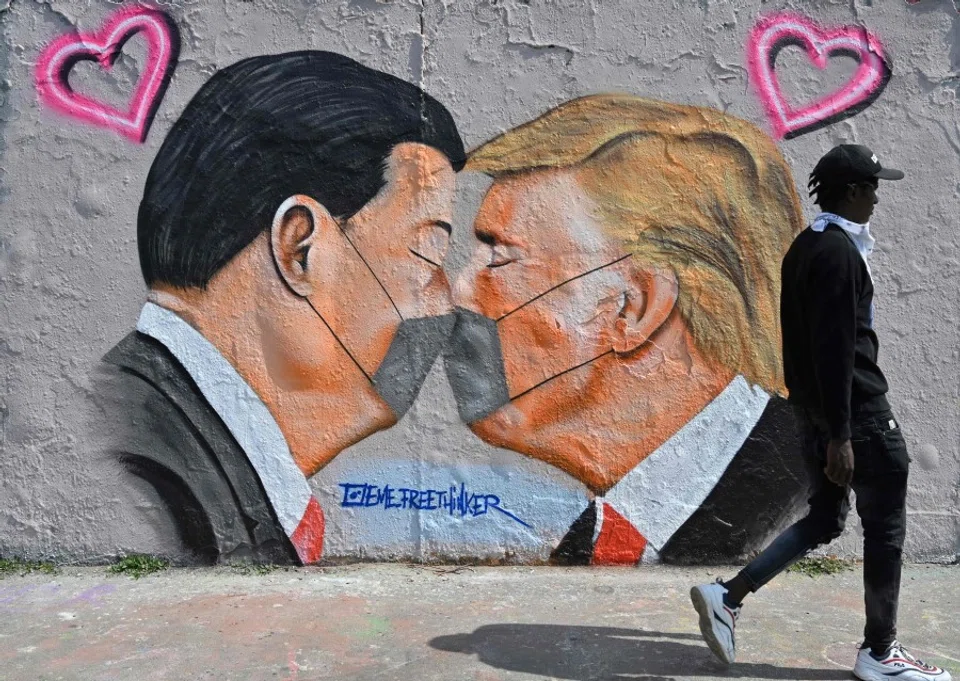
China and the US are at the centre of the global Covid-19 pandemic, the gravest health crisis since the Spanish Influenza of 1918-20 and the worst economic crisis since the Great Depression in the 1930s. Southeast Asia's extensive people-to-people links with the world's only two superpowers have deepened the pandemic in the region and Southeast Asian states are looking to both countries to help the region respond to and recover from the crisis.
The origin of the pandemic in China, and growing evidence of a cover-up of the virus tied to the country's authoritarian political system which has contributed greatly to its worldwide spread is hurting China's image globally.
China is where the pandemic originated and spread from to Southeast Asia. The first recorded death from Covid-19 outside of China in early February was in the Philippines. The victim travelled to the Philippines after contracting the virus in Wuhan, China.
Presently, the US has the largest number of recorded Covid-19 cases and deaths globally. For the first time in America's history, all 50 states are under emergency at the same time for the same reason. People returning from the US contributed to the second and larger wave of Covid-19 cases in Singapore.
The origin of the pandemic in China, and growing evidence of a cover-up of the virus tied to the country's authoritarian political system which has contributed greatly to its worldwide spread is hurting China's image globally. In Southeast Asia, Covid-19 has rekindled memories of the bird flu outbreak in 1997 and the SARS epidemic of 2002-03, both of which originated in China and spread to the region. China's global predominance in the production of protective equipment and hospital ventilators, and the country's reported "flattening of the Covid-19 curve" domestically though, means that Beijing is in a comparatively good position to help Southeast Asian states in their response to and recovery from the virus.
The devastating impact of Covid-19 in America, and strong criticism domestically and globally of the country's lack of preparation for and response to the pandemic, is hurting America's image globally.
The devastating impact of Covid-19 in America, and strong criticism domestically and globally of the country's lack of preparation for and response to the pandemic, is hurting America's image globally. The apparent peaking of the virus at the same time in the US and much of Southeast Asia has limited America's ability thus far to assist Southeast Asia.
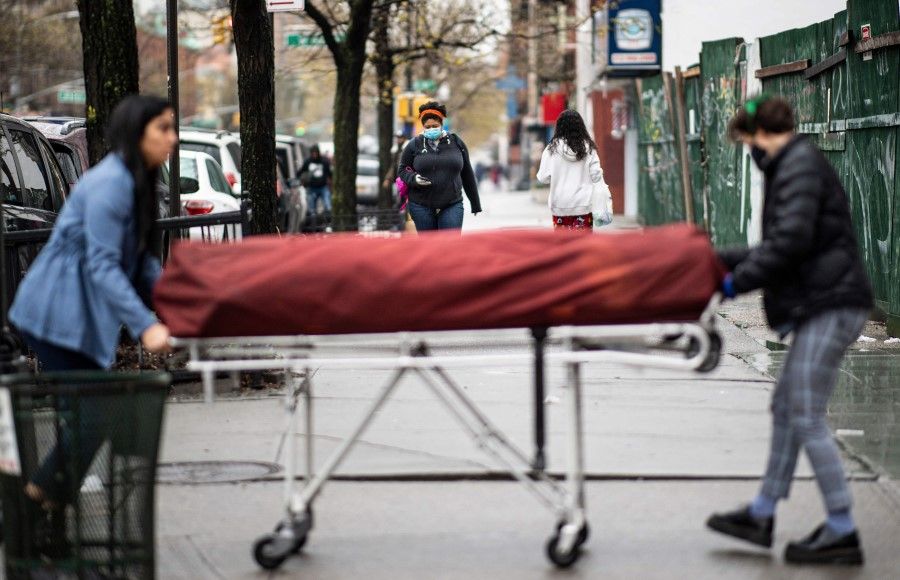
America's Centers for Disease Control and Prevention has provided expertise to the region, while the State Department has announced US$18.3 million in Covid-19-related assistance to Southeast Asia specifically beyond its contributions at the global level. As a result of a 19 April phone call between President Trump and President Duterte, the US has offered the Philippines a further $5.3 million in pandemic support, bringing the total US pledged support for the Philippines' Covid-19 response to over $9 million.
...neither China nor the US will benefit geopolitically in Southeast Asia from the pandemic.
The pandemic has deepened and broadened geopolitical rivalry between America and China and made it more virulent. The first Covid-19 cases reported in the US in late January originated from Wuhan. From the beginning of the crisis, the rivalry has defined Beijing and Washington's responses to each other. Beijing did not embrace offers of US assistance to address the initial outbreak in China and strongly criticised the Trump administration's early decision to limit air travel from China to America. As the pandemic continues to worsen in the US, the Trump administration is focusing blame for the pandemic on China and its authoritarian political system.
First takes on the geopolitical implications of the pandemic have focused on whether this is a turning point or rupture in the current global and Indo-Pacific orders, or an amplification of current trends, as well as whether China or the US will come out of it in a better position in their rivalry. In Southeast Asia, it is likely that the pandemic will amplify current negative views of both the US and China, and the US-China rivalry. If so, then neither China nor the US will benefit geopolitically in Southeast Asia from the pandemic.
Pre-pandemic images of the US and China
Both China and America entered the Covid-19 pandemic with serious image problems in Southeast Asia aggravated by mounting US-China rivalry. Southeast Asian governments and populations were concerned about the superpower behaviour of China and the US and of the ramifications for regional states of growing US-China rivalry.
The State of the Southeast Asia: 2020 Survey Report released by the ISEAS - Yusof Ishak Institute in January 2020 provides a clear statement of this geopolitical angst. Pew Research Center polling released in the same month shows that Southeast Asia is far from alone in worrying about China and America.
The State of Southeast Asia poll of policy elites from each of the ten Southeast Asian states makes difficult reading for Chinese officials. 60.4% of respondents had little or no confidence that "China 'would do the right thing' to contribute to global peace, security, prosperity and governance" compared with only 17.1% who expressed confidence. Only 1.5% (or 1 out of 67 respondents) viewed China as a benevolent power, while a plurality opted for the reply "China is a revisionist power and intends to turn Southeast Asia into its sphere of influence." Three-quarters (74.1%) though believe that China's poor image would improve if Beijing resolved "all territorial and maritime disputes with regional states peacefully in accordance with international law."
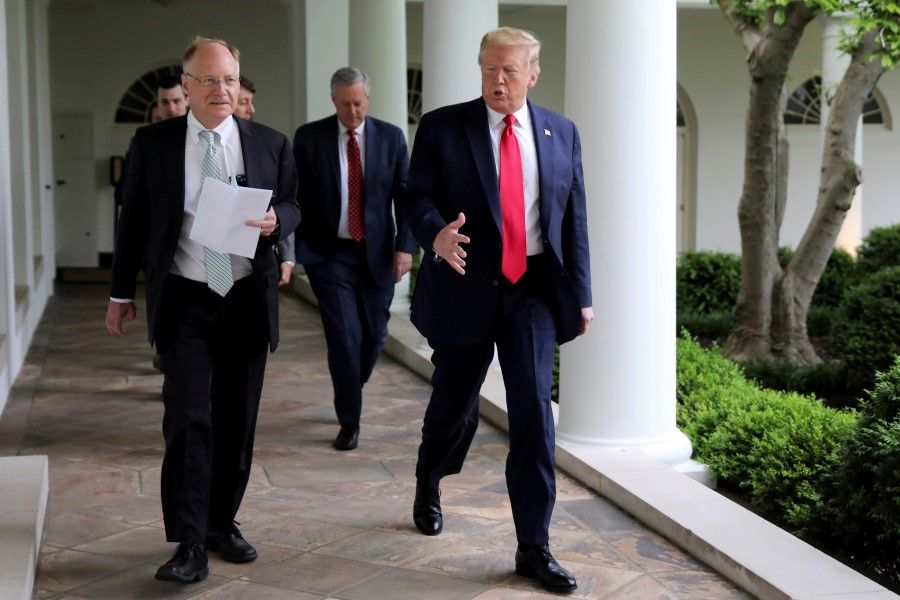
The poll makes only slightly better reading for US officials. Only 7.9% of respondents viewed America as the most important economic power in Southeast Asia compared with 79.2% for China. 26.7% saw the US as the most important political and strategic player, while 52.2% thought China was. Half (49.7%) had little or no confidence that America "would do the right thing" internationally compared with 30.3% who expressed confidence. 77% thought that America's engagement with Southeast Asia is declining under the Trump administration, a significant increase from the 2019 survey. The low-level participation of the US in the 2019 ASEAN-US Summit and East Asia Summit in Bangkok clearly did not help. Three-fifths (60.3%) agreed that a change of leadership in the November 2020 US presidential election would increase their confidence in America's position in the region.
Recent speeches by Southeast Asian leaders and strategic policy documents by their governments express deep concern with US-China rivalry and its regional implications. The fear of being forced to choose between either of the superpowers is prevalent in each Southeast Asian state as are the concerns about regional externalities from US-China trade tensions. The State of Southeast Asia 2020 reflected these concerns.
When asked, "ASEAN is caught in the crossfire of the US-China strategic rivalry as Beijing and Washington compete for influence and leadership in Southeast Asia. How should ASEAN best respond?", only 3.1% opted for choosing America or China. To mitigate the effects of US-China competition, 31.3% said ASEAN should continue not siding with either China or the US, while 48% believed the organisation should enhance its unity to fend off pressure from Beijing and Washington. 63.9% of those polled believed that the US-China "trade war" would negatively affect the Southeast Asia's economy, while only 21.8% thought the opposite.
Pandemic images of the US and China
Sino-US relations have deteriorated sharply during the Covid-19 pandemic. The two countries have engaged in a war of words over the origins of the virus and their respective attempts to contain it.
The US has accused China of covering up and misleading the international community during the early stages of the outbreak in Wuhan thereby allowing the virus to spread across the globe.
In response, Beijing has tried to obfuscate the origins of Covid-19 by suggesting it spread from Italy to China, or that the US military had planted it in Wuhan, accused America of fumbling its response to the virus, and has promoted itself as a global saviour through its provision of medical supplies and personnel to affected countries.
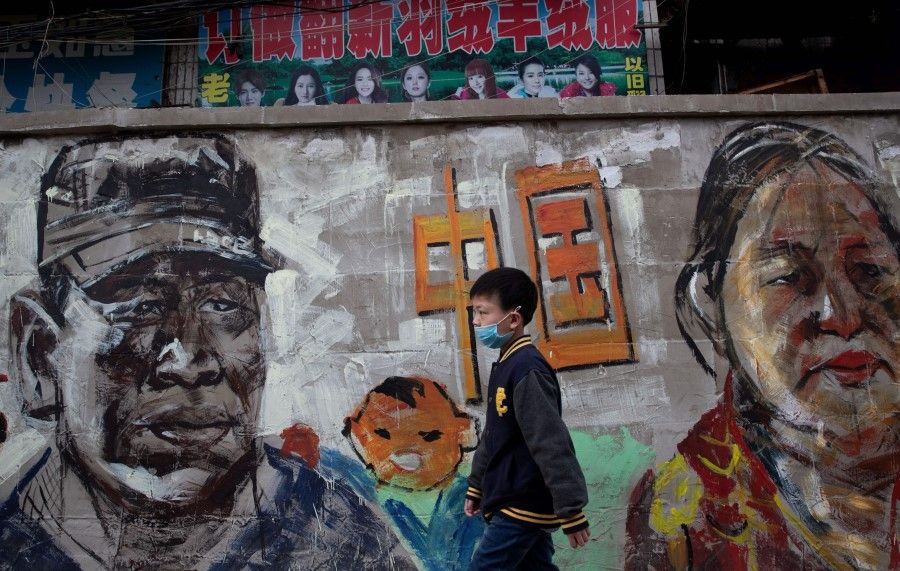
Discord between the US and China will reinforce negative perceptions of the two countries in Southeast Asia. The lack of cooperation between the two superpowers during the worst crisis since the end of the Second World War has not gone unnoticed by regional leaders.
In a media interview, Singapore Prime Minister Lee Hsien Loong noted that in the past, the world had greatly benefited from America's global leadership but that if the US was currently in a "different mode" it would be a loss. He went on to lament the lack of cooperation between China and the US, noting that "swapping insults and blaming one another.... I do not think that is going to help us solve the problem sooner".
China's supply of medical equipment and experts to Southeast Asian countries has generally been welcomed, though the quality of some of the supplies has been criticised. It remains to be seen whether China's "face mask diplomacy" will have a lasting positive impact on its soft power image in Southeast Asia, or whether its efforts will be offset by memories of where Covid-19 originated.
Regional security dynamics
During the Covid-19 crisis, US and Chinese military activities in Southeast Asia and the wider Indo-Pacific have been used to gauge the strategic intentions and operational readiness of both countries.
On 10 March 2020, the USS McCampbell conducted a freedom of navigation operation (FONOP) in the Paracel Islands. This was the US Navy's second FONOP in the South China Sea in 2020 (the first took place on 25 January in the Spratly Islands) and conformed to the operational pattern of one FONOP every two to three months. During March, the US Navy held two exercises in Southeast Asia, in the South China Sea and in the Philippine Sea. In recent years, activities such as these have become the norm. In 2019 the US Navy conducted eight FONOPs in the South China Sea, five in 2018 and four in 2017.
However, Covid-19 has had an impact on US military operations in the region.
In mid-March, the Pentagon suspended all overseas deployments for 60 days. This meant that the annual US-Philippine Balikatan exercise scheduled for 4-15 May had to be cancelled as was the rotational deployment of 2,500 US Marines through Darwin, Australia. Negotiations between the US and the Philippines over the future of the 1998 Visiting Forces Agreement (VFA) - which will be terminated on 9 August unless an agreement can be reached - appear to be on hold due to the Covid-19 crisis. The biennial multilateral US-led Rim of the Pacific naval exercises scheduled for July are also in serious doubt. Most importantly, the number of US aircraft carriers - potent symbols of American military power in the region - available for operations in the Western Pacific has been reduced: the USS Theodore Roosevelt and USS Ronald Reagan have been confined to port due to outbreaks of Covid-19 among their crews, while the USS Carl Vinson and USS Chester Nimitz are undergoing maintenance. However, other major US surface ships and submarines do not appear to have been affected by the virus.

Pentagon officials have vehemently denied that the spread of Covid-19 has undermined the US military's overall operational readiness, and has warned potential adversaries not to try and take advantage of the situation.
Amid the pandemic, the Trump administration has continued to roll out its Free and Open Indo-Pacific (FOIP) strategy. In mid-March, the Hawaii-based Indo-Pacific Command requested US$18.5 billion in additional funding for 2022-26 to implement the 2018 National Defense Strategy. The plan, called "Regain the Advantage", calls for improved long-range precision strike capabilities and air defence systems, enhanced forward deployed capabilities and greater interoperability with allies and partners to deter China and Russia from acts of aggression.
Despite the Pentagon's reassurances and commitment to FOIP, however, the optics of the problems facing the US military in the Indo-Pacific do not look good and will reinforce concerns about America's commitment to the region. As Ashley Townsend and Jim Golby have observed, "Stricken warships, stalled deployments and Washington's acute preoccupation with its own poorly handled humanitarian crisis will not reassure Indo-Pacific allies that the US is able to walk and chew gum."
Beijing's claims that its armed forces have been unaffected by Covid-19 seem highly doubtful.
China has seized on the problems facing the US military to promote a two-part narrative. First, US FONOPs and exercises in the South China Sea are not only provocative and a violation of China's sovereignty but also designed to distract attention from America's failure to contain the spread of Covid-19, plunging stock markets and rising unemployment.
Second, Covid-19 has not affected the PLA's operational readiness due to the country's superior system of governance. To reinforce these narratives the Chinese media has highlighted PLA missions in the South China Sea and Taiwan Strait, the establishment of research stations on two of its artificial islands in the Spratlys, and the successful mining of natural gas in the South China Sea. However, given the PLA's role in assisting civilian authorities with the various lockdowns of Chinese cities in the early stages of the outbreak, Beijing's claims that its armed forces have been unaffected by Covid-19 seem highly doubtful.
The US State Department has called on China to "stop exploiting the distraction or vulnerability of other states to expand its unlawful claims in the South China Sea"...
China's attempts to assert its territorial and jurisdictional claims in the South China Sea have continued unabated during the pandemic. On 2 April, a China Coast Guard (CCG) vessel rammed and sank a Vietnamese fishing boat near the Paracels, and two weeks later the Haiyang Dizhi 8, a Chinese survey ship that had been active in Vietnam's exclusive economic zone (EEZ) during May to October 2019, returned to Vietnamese waters before moving into Malaysia's EEZ where it shadowed a Malaysian-chartered drilling ship. The Haiyang Dizhi 8 is accompanied by vessels belonging to China's maritime militia and the CCG. On 18 April the Chinese government announced the creation of two new administrative units to govern the Paracels and Spratlys and the following day released standard names for 80 geographical features in the South China Sea.
These incidents have led to an uptick in tensions between China and the other claimants, and between the US and China. Vietnam protested the sinking of its fishing boat and the establishment of the administrative units in the South China Sea as a violation of its sovereignty. The ramming of the Vietnamese fishing boat also led to a rare rebuke of China from the Duterte administration which called the CCG's actions "provocative" and expressed solidarity with Vietnam (in June 2019 a vessel belonging to China's maritime militia sank a Philippine fishing boat at Reed Bank leaving the crew to be rescued by a passing Vietnamese ship). The Philippines also protested the setting up by China of new administrative units in the South China Sea, as well as an alleged incident in which a Chinese warship turned its fire-control radar on a Philippine Navy vessel. As usual, the Malaysian government has downplayed the presence of Chinese government vessels in its waters but is actively monitoring the situation.
...the US Navy has deployed three major warships to the area in which the Haiyang Dizhi 8 is operating.
The US has been highly critical of this new bout of Chinese assertiveness. The US State Department has called on China to "stop exploiting the distraction or vulnerability of other states to expand its unlawful claims in the South China Sea" and to end its "provocative actions" and "bullying behaviour".
In a demonstration that Covid-19 has not affected America's ability to respond to events in the South China Sea, the US Navy has deployed three major warships to the area in which the Haiyang Dizhi 8 is operating. The three warships, together with an Australian Navy ship, conducted a combined exercise. According to the US Navy, the warships are in the area to "promote freedom of navigation and overflight" and thus far, the interactions between the US and Chinese vessels have been "safe and professional".
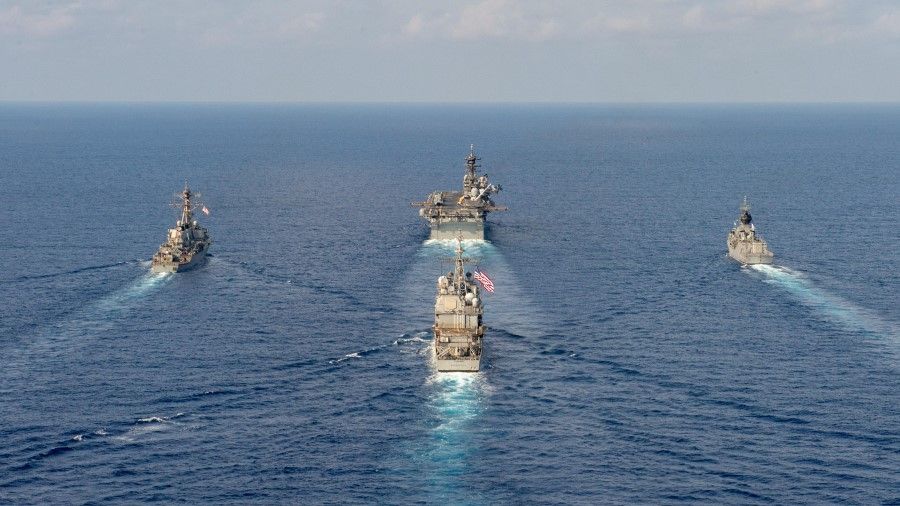
Due to Covid-19, talks between ASEAN and China on the second draft of the Code of Conduct (CoC) for the South China Sea have been suspended. China's recent activities in the South China Sea will only worsen its image in Southeast Asia, especially if Beijing is perceived to be asserting its claims while the other claimants are preoccupied with responding to the pandemic.
Geoeconomics and Covid-19
The International Monetary Fund (IMF) forecasts that the Covid-19 crisis will trigger the worst economic recession since the Great Depression. In Southeast Asia, most countries' economies will contract, unemployment will soar and debt levels will balloon.
Amid this gloom, the pandemic will likely reinforce two China-Southeast Asia economic trends. President Xi Jinping's signature Belt and Road Initiative (BRI) was already facing problems in Southeast Asia including several major projects facing delays, growing selectiveness by Chinese state banks to fund projects, and concerns with host states' ability to service their BRI debts. The pandemic will aggravate these problems. Laos and Cambodia, already facing questions about their mounting external debt, will likely become even more dependent on China.
Second, Covid-19 will likely accelerate the reorganisation of regional supply and value chains to reduce their reliance on China. This process of reducing the number of China-based links of supply and value chains not focused on the Chinese domestic market started last decade and has been boosted by US-China trade tensions. Covid-19 will have the same and possibly larger effect. Greater Japanese government funds to assist Japanese firms to relocate from China are part of the Abe administration's Covid-19 response package. Larry Kudlow, the White House National Economic Council Director, is pushing for the Trump administration to follow Tokyo's lead.
Conclusion
The Covid-19 crisis shows the depth of Southeast Asian countries' reliance on China and America and exposure to their growing rivalry. When asked in the State of Southeast Asia: 2020 Survey Report about regional options in response to US-China rivalry, nearly half (48%) of respondents wanted more regional resilience and unity and 14.7% opted for closer ties with third parties such as Japan and the European Union. Covid-19 will likely boost both of these numbers.
This article was first published as ISEAS Perspective 2020/34 "Images Reinforced: COVID-19, US-China Rivalry and Southeast Asia".
Related: ASEAN 2020: How to swim in the choppy waters of the US-China conflict | ASEAN's future: China or the US? | Covid-19: China's shifting narrative and the role of Southeast Asia | China has a major soft power problem in Asia | ASEAN: The ultimate winner of a China-US rivalry (Part I) | ASEAN: The ultimate winner of a China-US rivalry (Part II)

